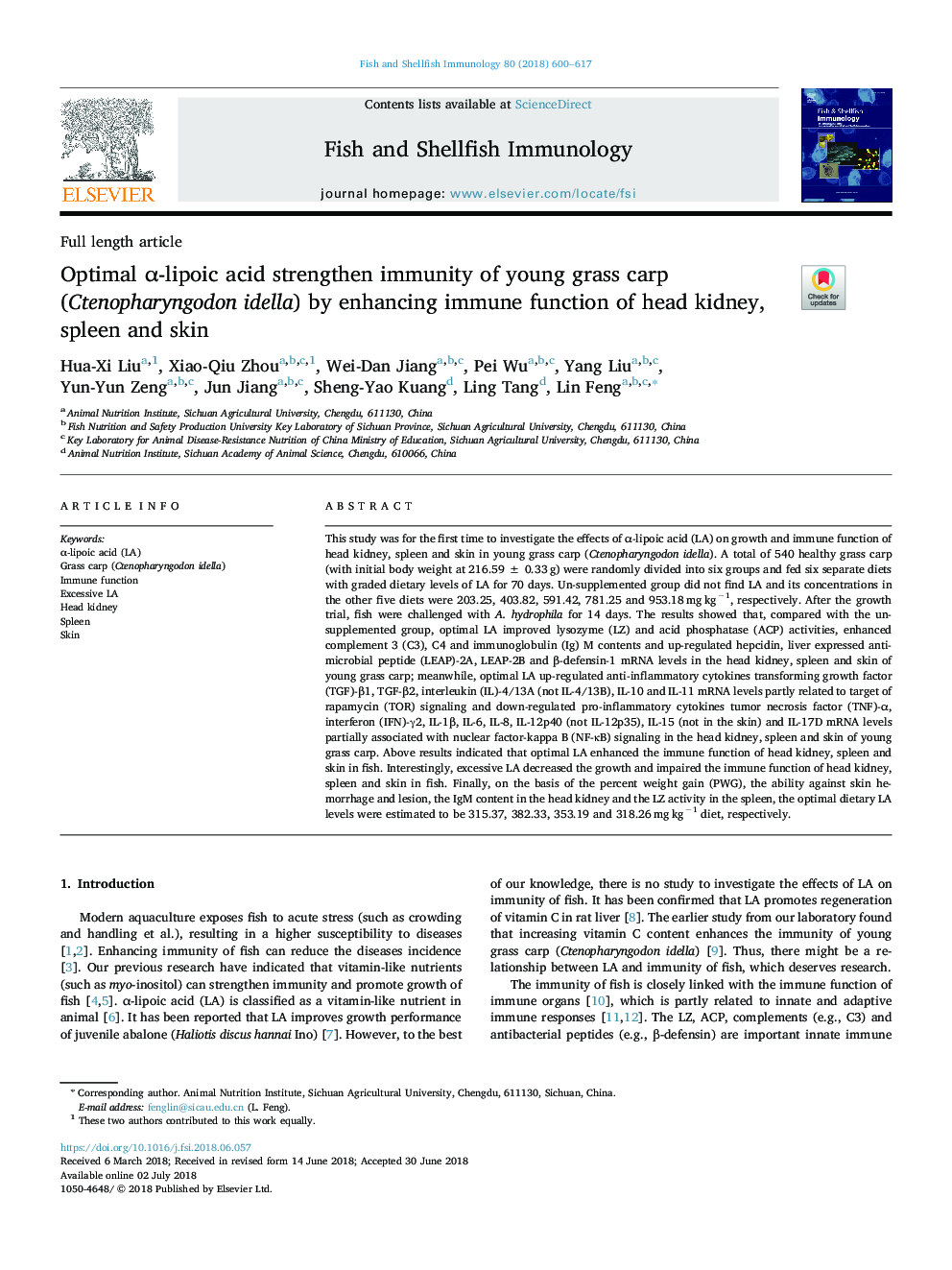| Article ID | Journal | Published Year | Pages | File Type |
|---|---|---|---|---|
| 8498274 | Fish & Shellfish Immunology | 2018 | 18 Pages |
Abstract
This study was for the first time to investigate the effects of α-lipoic acid (LA) on growth and immune function of head kidney, spleen and skin in young grass carp (Ctenopharyngodon idella). A total of 540 healthy grass carp (with initial body weight at 216.59â¯Â±â¯0.33â¯g) were randomly divided into six groups and fed six separate diets with graded dietary levels of LA for 70 days. Un-supplemented group did not find LA and its concentrations in the other five diets were 203.25, 403.82, 591.42, 781.25 and 953.18â¯mgâ¯kgâ1, respectively. After the growth trial, fish were challenged with A. hydrophila for 14 days. The results showed that, compared with the un-supplemented group, optimal LA improved lysozyme (LZ) and acid phosphatase (ACP) activities, enhanced complement 3 (C3), C4 and immunoglobulin (Ig) M contents and up-regulated hepcidin, liver expressed antimicrobial peptide (LEAP)-2A, LEAP-2B and β-defensin-1 mRNA levels in the head kidney, spleen and skin of young grass carp; meanwhile, optimal LA up-regulated anti-inflammatory cytokines transforming growth factor (TGF)-β1, TGF-β2, interleukin (IL)-4/13A (not IL-4/13B), IL-10 and IL-11 mRNA levels partly related to target of rapamycin (TOR) signaling and down-regulated pro-inflammatory cytokines tumor necrosis factor (TNF)-α, interferon (IFN)-γ2, IL-1β, IL-6, IL-8, IL-12p40 (not IL-12p35), IL-15 (not in the skin) and IL-17D mRNA levels partially associated with nuclear factor-kappa B (NF-κB) signaling in the head kidney, spleen and skin of young grass carp. Above results indicated that optimal LA enhanced the immune function of head kidney, spleen and skin in fish. Interestingly, excessive LA decreased the growth and impaired the immune function of head kidney, spleen and skin in fish. Finally, on the basis of the percent weight gain (PWG), the ability against skin hemorrhage and lesion, the IgM content in the head kidney and the LZ activity in the spleen, the optimal dietary LA levels were estimated to be 315.37, 382.33, 353.19 and 318.26â¯mgâ¯kgâ1 diet, respectively.
Related Topics
Life Sciences
Agricultural and Biological Sciences
Aquatic Science
Authors
Hua-Xi Liu, Xiao-Qiu Zhou, Wei-Dan Jiang, Pei Wu, Yang Liu, Yun-Yun Zeng, Jun Jiang, Sheng-Yao Kuang, Ling Tang, Lin Feng,
